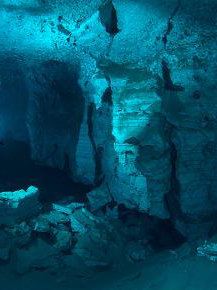Call for coastal site rules
 Australia is girt by sea that contains important, but unprotected, archeological sites.
Australia is girt by sea that contains important, but unprotected, archeological sites.
New archaeological research highlights major blind spots in Australia’s environmental management policies, placing submerged Indigenous heritage at risk.
Researchers in the Deep History of Sea Country (DHSC) project team have uncovered a new intertidal stone quarry and stone tool manufacturing site, as well as coastal rock art and engravings, during a land-and-sea archaeological survey off the Pilbara coastline in Western Australia.
These findings come alongside a separate study focused on the Northern Territory which identified underwater environments dating back to the Pleistocene that could provide important environmental and cultural insights into ancient Indigenous migration, land use and early occupation of Australia.
But submerged archaeological landscapes are not included in nationally-coordinated studies on marine biology and shipwreck heritage.
A growing number of studies suggest there should be state-level baseline projects to extend the search for submerged landscapes nationally.
Scientists estimate there were 2 million square kilometres more coastal plain during the last Ice Age compared with today, and the larger coastal lands now forming Australia’s underwater continental shelf are expected to hold many significant archaeological sites.
The submerged cultural landscapes represent what is known today as Sea Country to many Indigenous Australians, who have a deep cultural, spiritual and historical connection to these underwater environments.
Aerial, landscape and ground surveys of North Gidley Island and Cape Bruguieres in Western Australia have brought fresh evidence of cultural heritage where hundreds of submerged ancient stone tools made by Aboriginal people dating back to more than 7,000 years ago were discovered.
The team is yet to determine the exact age of the sites found on the intertidal zone and fully submerged channel, but the results demonstrate a promising way forward to study the integrated landscape above and below the water line.
“The challenge we now face for Australian submerged heritage is to extend the discoveries made at Murujuga to other areas, both in the land and seascape around these sites, but also across the Australian continental shelf,” says marine archaeologist Associate Professor Jonathan Benjamin.
“We need to better understand and manage this underwater cultural heritage through local and national approaches.
We must consider the very different scales of research, from ‘big data’ down to the boots-on-the-ground and snorkels-in-the-mouth as we comb Australia’s coasts, intertidal zones and submerged environments to record new archaeological sites.
“Submerged sites are highly likely to be discovered around the continent, and down to depths as great as 130 metres.”








 Print
Print